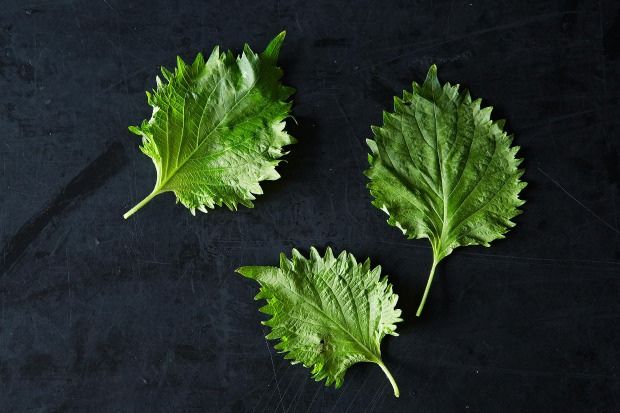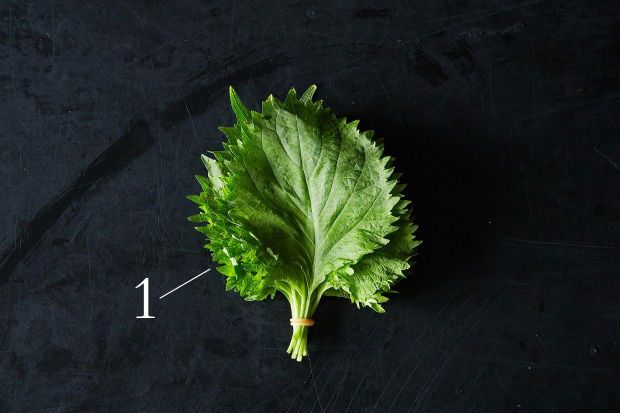Popular on Food52
Continue After Advertisement
25 Comments
Chris G.
March 1, 2016
Wow, Abbie, Thanks for the really quick answer! :-) Never been to Texas, but know a fair bit about it from reading and know there are places there that get pretty cold too, like the Pan handle! (Have read "Mitchner's" Texas several times...how accurate is it?
Chris
Chris
aargersi
March 1, 2016
Haha - I haven't read it but I am guessing it doesn't capture the easy going hippie vibe in Austin :-) we do get freezes, but not this year!
Chris G.
March 1, 2016
Does anyone know, can you grow Shiso in the soggy colder Pacific Northwest, say the Seattle area. (this year, record amounts of rain, last couple of years more sun and hotter than normal!) I'm thinking maybe a south-facing heat retaining wall & maybe some in filtered sun and some in bright sunlight(?)
Chris
Chris
aargersi
March 1, 2016
Can you grow basil? My shiso thrives right next to my basil so I think if you can grow one you can grow the other. They do like long hours of sunshine but in Texas I actually grow then under palm trees, our direct sun cooks them, so yours might work!
hardlikearmour
March 1, 2016
I've grown it in Portland -- it's tender, so it won't survive the winter, but makes a nice summer herb. Definitely give it a go -- what's the worst that can happen?
Greenstuff
March 1, 2016
And I used to grow it in Boston. It wouldn't have occurred to me that it overwintered anywhere, but our summers could be either cold and wet or hot and muggy.
Jen0315
August 5, 2013
there's a Korean variety and its seeds- Perilla seeds are what I think they're called in English- are used in Korean cooking, and its oil has a warm nuttiness while in its ground form, it's added to noodles and broth to give a wonderful milkiness.
Pat E.
August 2, 2013
The red shiso is used to make the red salted pickled plums. The shiso shown here "ao" or blue (?) shiso is used as an herb and frequently a garnish like parsley. Japanese food doens't taste quite right without it. I grow it every year...it's a little finicky here in SoCal. I'm guessing it like hot humid weather best. I have made the pickles from this site many times...and am just waiting for my current crop of shiso to get a litle bigger to make them again...hopefully while the cucumbers are still producing.
GoodFoodie
August 2, 2013
Shiso is incredibly easy to grow. Not sure if it's classified as a perennial, but it reseeded itself every year in my garden. Plants are usually sold at Japanese markets too.
AntoniaJames
August 2, 2013
Will be putting it in at least one batch of apple butters this fall, perhaps with a touch of fresh ginger. . . working out the details now for getting maximum flavor. Again, stay tuned . . . . ;o)
CrabCakes
August 2, 2013
Shiso ice cream was most tasty - I made some earlier in the summer. I used a recipe for mint ice cream, subbing the shiso and lime instead of lemon. Mmmm. I also made shiso sugar for use in future cookie recipes
Alyssa W.
August 2, 2013
Thank you for these ideas!! I live in Japan and love shiso, but never really knew how to use it in my own cooking. This is so helpful.
savorthis
August 1, 2013
I just knew I'd see gingerroot's recipes in that list! I love love shiso and have yet to find any success planting it. Though we make the schlepp to H Mart for a host of other ingredients anyway so until I can grow it, I'll schlepp for it!
aargersi
August 1, 2013
FYI - I learned this by accident and am super happy about it - shiso roots readily in a water glass on the window sill, you can then plant it and not have to drive to the other end of town to get it ever again!
AntoniaJames
August 1, 2013
Abbie, that's good to know. I had a plant a few years ago, in a pot on the deck beneath my kitchen window, but could not get it to thrive . . . was never sure exactly what the problem was, but I'm inspired to try again. Thanks so much! ;o)
aargersi
August 1, 2013
Mine has thrived in the same light / water as my basil - which here = dappled midday (read: scorching Texas) sun. It also seeded itself and has popped up here and there ...
AntoniaJames
August 1, 2013
I've heard that it grows like a weed (spontaneously, profusely) in Virginia; our cold evenings and nights, even in the summer, may be the problem here. My regular basil struggles a bit for that reason. Fingers crossed. ;o)
Lindsay-Jean H.
August 1, 2013
This is thrilling news. (Especially since I learned the hard way that shiso seeds have dormant periods.)
AntoniaJames
August 1, 2013
By the way, our local shiso has cinnamon notes, more so than mint or ginger . . . and the teeth around the edges are not quite as sharp as what you've photographed. Thinking about using it to flavor Korean plum vinegar (not as refined as the Japanese kind, at least the one I've been buying), for making quick pickles, light cucumber salads, tossing with napa cabbage for an entirely new slaw, etc. Stay tuned . . . .;o)
Lindsay-Jean H.
August 1, 2013
I'm amazed by the variety of flavor notes different people pick up on with shiso. In addition to cinnamon (and the others listed), I've also seen people mention anise and cumin. And I'm definitely staying tuned -- sounds great!
AntoniaJames
August 1, 2013
How does one use perilla seeds? I've seen them at the Korean grocery. ;o)
Lindsay-Jean H.
August 1, 2013
Korean perilla leaves are different from Japanese perilla leaves, so I would guess the seeds taste different too, so I'm afraid I'm not much help. In Japan, the seeds (shisonomi) are often used in pickles. Perhaps a question for the Hotline!



See what other Food52 readers are saying.